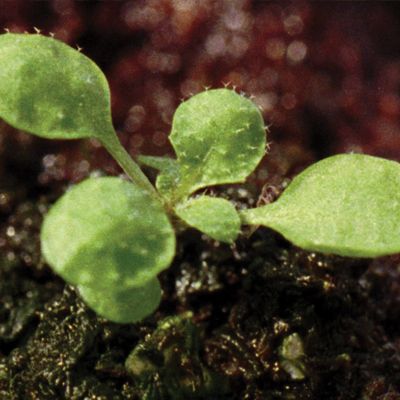My Cart
Your Shopping Cart is currently empty. Use Quick Order or Search to quickly add items to your order!
Jermel Watking, Bruce Nash, and David Micklos
DNA Learning Center, Cold Spring Harbor Laboratory
Although DNA is the blueprint of life, not all genes are actively expressed in every cell within a multicellular organism. As discussed in our Carolina Tips® article, "Epigenetics I: Using Carolina Corn Ears to Teach Genetic Imprinting," phenotypic differences between cells occur because genes are turned on or off in a cell-specific way. Many changes in gene expression are mediated by chemical modifications, such as the addition to DNA of methyl groups (CH3), which block the binding of transcription factors to promoter sequences. These changes are "above" or "over" (epi) a gene. Because they do not affect the nucleotide sequence itself, they are called "epigenetic" modifications. Within body (somatic) cells, epigenetic modifications are copied during DNA replication and passed to daughter cells during mitosis. Some epigenetic modifications are maintained during meiosis, producing germ (sex) cells that carry modifications from one generation to the next.
One very important step in plant development is the switch from vegetative growth to flowering for sexual reproduction. In Arabidopsis, a popular model organism for plant biologists, flowering time is controlled by the homeotic gene Flowering Wageningen (FWA). First discovered in fruit flies, homeotic genes encode transcription factors that control large-scale developmental patterns, such as the location of body parts, in both animals and plants. Mutants where one part of an organism is transformed into another are termed "homeotic" (from the Greek homeosis, meaning similar).
FWA is normally expressed in endosperm, a tissue that feeds the seedling but does not contribute to the structure of the adult. In the growing plant, DNA methylation silences both copies of the FWA gene, which allows the switch from vegetative growth to flowering. Methylation specifically occurs at repeated sequences within the promoter of the FWA gene. In fwa-1 and fwa-2 mutants, flowering is delayed because the normal silencing does not occur. DNA methylation of the promoter region is lost, allowing the FWA protein to continue to regulate a developmental program that suppresses flowering—as it would normally do in the endosperm.
To study this homeotic mutation, you can grow Arabidopsis seed in your class. Students can easily observe that wild-type FWA plants flower several weeks earlier than fwa mutants, which also develop much larger leaves. DNA extracted from both types of plants can then be incubated with a methylation-dependent restriction enzyme called McrBC, which cuts DNA within heavily methylated regions. Wild-type FWA DNA is methylated, and so is cut by McrBC. DNA from the fwa mutant is uncut. Then add primers spanning the FWA promoter to both types of DNA and the region is amplified by polymerase chain reaction (PCR). Agarose gel electrophoresis shows that DNA from the uncut fwa mutant DNA amplifies to produce a band of the predicted size; however, the cleaved wild-type DNA fails to amplify and produces no visible band.
This relatively simple experiment offers a sophisticated test for specific chemical changes to DNA that act as an important developmental regulator in plants. Recent advances in technology now allow scientists to view the "epigenome," or complete set of epigenetic modifications for the genome of any species. We are beginning to understand more and more about how these epigenetic changes operate "above" the genome to control development and contribute to human health. Errors in epigenetic modification contribute to more than 70 human diseases, including many forms of cancer.
One final connection: the repeated region of the FWA promoter appears to be derived from a short interspersed nuclear element (SINE). DNA methylation normally silences this transposon and other types of "jumping genes" to inhibit their movement in the genome. Since SINEs contain a promoter for RNA polymerase, their integration next to a gene can provide a ready-made on-off switch that is controlled by DNA methylation. To study a SINE transposon in your own genome and in those of people around the world, try the Carolina kit, Using an Alu Insertion Polymorphism to Study Human Populations (items #211230 to #211232A).
To learn more about transposons and their role in evolution and human health, stay tuned for a Carolina Tips® article on recent discoveries in the field.